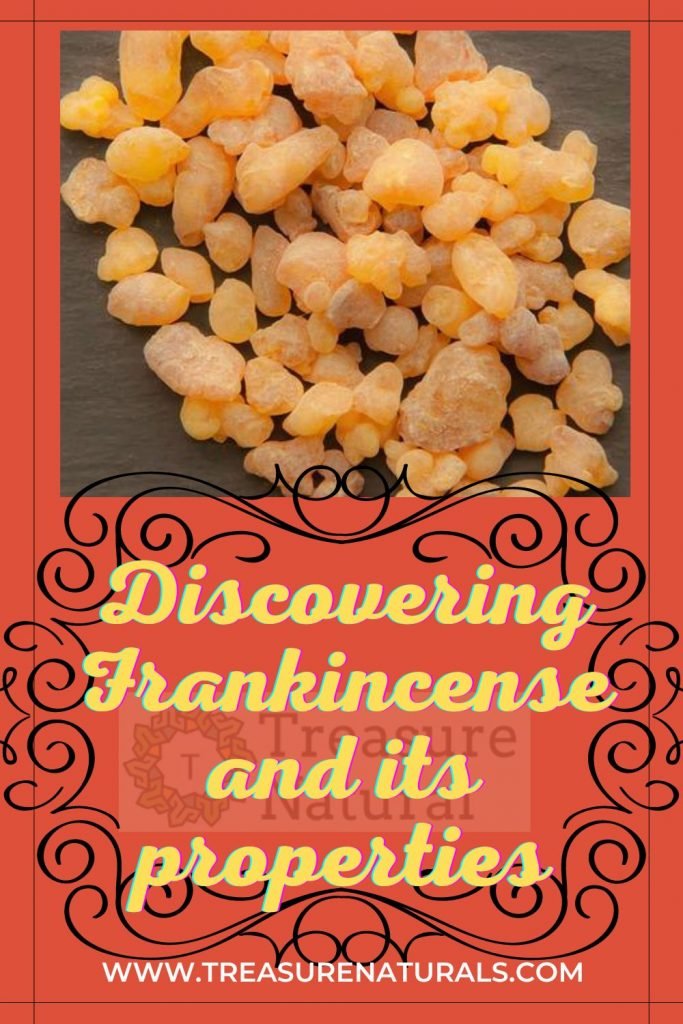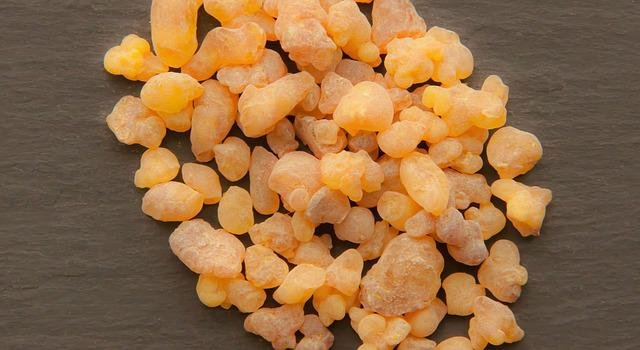
Frankincense is an aromatic resin obtained from some species of the genus Boswellia. Known since ancient times, it is used both for the production of incense and oils, as well as perfumes. Many properties are recognized. Let’s find out together.
Frankincense: what it is
Frankincense is an aromatic resin that is obtained from some species of the genus Boswellia. It is used both for the production of incense, oils and perfumes. The term derives from the French ” franc encens ” which means “high quality incense”. Considered a “pure incense”, it has always been the most desirable of all other types of incense.
Frankincense: the plant
Trees of the Boswellia genus grow mainly in African and Arab regions, including Yemen, Oman, Ethiopia, and Somalia. Oman, which together with China, India and other Mediterranean countries, has been known for the production and trade of incense for thousands of years, is even considered the oldest source of incense.
There are several varieties. Among the best known are:
- Boswellia carterii
- Boswellia sacra
- Boswellia serrata
- Boswellia frereana
- Boswellia neglecta
- Boswellia papyrifera
- Boswellia rivae
Extraction method
Also called olibanum, it comes mainly from two types of trees:
- Boswellia sacra
- Boswellia carteri
The process begins with the extraction of the milky white sap that is secreted by the bark of the tree. Within about 10 days it hardens into a gum resin and is scraped off in the form of droplets.
It comes in the form of milky-white, almost silvery crystals, with possible light green shades. The quality of the resin depends very much on the climate, the environmental conditions and the harvesting period.
To establish its quality, size and color are evaluated: the larger and lighter, the higher its quality.
How is Frankincense oil extracted?
Raw frankincense resin crystals are crushed into a powder and placed in an oil bath. Then they are subjected to steam distillation (or CO2 extraction), extraction methods allow to obtain a yellow essential oil with shades tending to light green, with a pleasant woody, earthy and spicy aroma.
Like any other type of essential oils, essential oil also maintains its stability and a longer duration if stored in a cool and dry place, away from direct sunlight, and with the cap tightly closed.
Frankincense: perfume
The aroma is woody, almost earthy, with a spicy hint. Essential oil tends to be a bit sweeter and cooler than resin.
For this very reason, most people prefer the aroma of frankincense essential oil over that of resin when burned as incense.
Frankincense: various uses throughout history
For hundreds of years, this gum resin has been used in place of incense, mainly during religious rituals, due to its important healing and balsamic properties.
Its use was originally reserved for religious functions, during which it was burned to spread the scent towards the sky, in such a way as to attract God’s attention.
Historically, however, burning this rubber resin meant defeating negative energies and keeping evil spirits at bay.
In addition, priests, rabbis and medical men – especially in the Middle East – valued Frankincense essential oil for its antiseptic, anti-inflammatory and rejuvenating properties.
Use in aromatherapy
Together with other rubber resin obtained from trees of Asian regions such as the elemi of the Philippines, myrrh and benzoin, its resin has always been burned for purifying rites and its oil used as an ointment for embalming and to heal inflammation and wounds.
Similar to frankincense essential oil, it is incredibly aromatic: it gives off a sweet but spicy scent. Precisely for this reason it has had great popularity in both modern and ancient aromatherapy.
The ancient Egyptians, Romans and Greeks used it in their religious rituals. Some cultures even appreciated it more than gold, making it an integral part of trade on the Silk Road.
Uses of frankincense in the modern era
Even today it is used in religious rituals to create a bond with the divine. In aromatherapy it is used to purify the air, promote relaxation, create an atmosphere suitable for meditation, yoga and prayer.
Frankincense: property
It is used for spiritual applications, in perfumery and in air fresheners, but it is also useful for resolving and alleviating numerous physical ailments.
Traditional Chinese medicine has always used it to treat ailments of various kinds, especially those of an inflammatory nature, such as asthma, arthritis and chronic intestinal diseases, and for its expectorant, antiseptic and anxiolytic properties.
In Ayurvèda it is always highly appreciated for its anti-inflammatory properties and is therefore used in case of joint pain and rheumatism.
Furthermore, the antiseptic properties of the essential oil, combined with the stimulating action on the immune system, are useful for treating infections of the skin, genitourinary tract and respiratory tract.
Without forgetting the benefits it brings on a psychological level, especially in states of anxiety and stress.
It is also very useful as a massage oil. In fact, it would help to dissolve muscle stiffness and, on the face, it would help to relax wrinkles and regenerate skin affected by eczema and psoriasis.
Finally, combined with a relaxing-soothing massage, it would also help the mind, to relieve anxiety and depression.
We therefore summarize the properties of this hot and spicy scented resin below:
- analgesic
- painkiller
- antibacterial
- anti-inflammatory
- antiseptic
- expectorant
- antifungal
- healing and regenerating
- tonic and stimulating
- astringent
- antidepressant
- sedative
Frankincense: benefits
From all the properties described above, it follows that frankincense brings the following various benefits:
- relieves painful conditions such as migraines, arthritis, sciatica, muscle pain, rheumatism, joint pain…
- it is an excellent skin regenerator, therefore ideal in case of acne, eczema, erythema… as well as to promote the healing process
- soothes inflamed skin by reducing sensations of redness, swelling and itching
- strengthens the immune system
- it is a good expectorant very useful in case of colds, sinusitis, cough, phlegm, bronchitis
- helps reduce stress reactions and negative emotions generated by depression, anxiety and mental fatigue
- promotes meditation
- improves concentration and memory
- it is an excellent antiseptic against viruses and bacteria present in the air
Frankincense: how to use
You can use the essential oil with the diffuser, mixed with other oils or pure:
- diffuser: 10 drops in a lamp for aromas and diffusers
- inhalation: 10 drops on a cloth or directly from the container
- topical: 15 drops in 50 ml of vegetable oil as a carrier or cream as a mixing base
- massage: 20 drops in 50 ml of carrier oil
Where to buy frankincense
You can buy it online, in some herbalists, in specialized shops and in shops dedicated to esoteric and spiritual items.
If you are looking for the real one, obtained from plants of the Boswellia genus, check what is written on the package. The Boswellia species most used for the production of incense are B. sacra, B. carterii, B. thurifera (or serrata), B. frereana and B. papyrifera.
In general, when buying incense it is good to make sure that it is pure and does not contain harmful substances. If of poor quality, it can cause nausea, headache and irritate the respiratory tract.
Price of the frankincense
It is quite an expensive product. On average, a 10ml bottle costs around 16 USD. The product in grains is a little cheaper: in fact, the 50 gr package costs 16 USD.
Contraindications of frankincense

It is quite rare that it causes serious side effects, however, it is good to report what are the possible symptoms of negative side effects.
First of all, skin rashes and / or gastrointestinal disturbances may occur, such as stomach pain, nausea, heartburn, hyperacidity and an unpleasant feeling of satiety.
Any allergic reactions could manifest themselves in a more serious and severe way than just hives, such as difficulty breathing, tightness in the throat or chest and chest pain.
Essential oil may also increase the risk of abnormal bleeding. For this, people with bleeding disorders or who take anti-coagulant drugs (such as warfarin, heparin, ibuprofen, aspirin …) must be very careful. Equal attention must also be given to those who are planning a surgical or dental intervention.
Also for its emmenagogic properties, its use by pregnant women is strongly discouraged, since the substance could induce menstruation potentially dangerous for the fetus.
That said, it is therefore always essential to consult a doctor before using it for therapeutic purposes.
Keep out of the reach of children.






